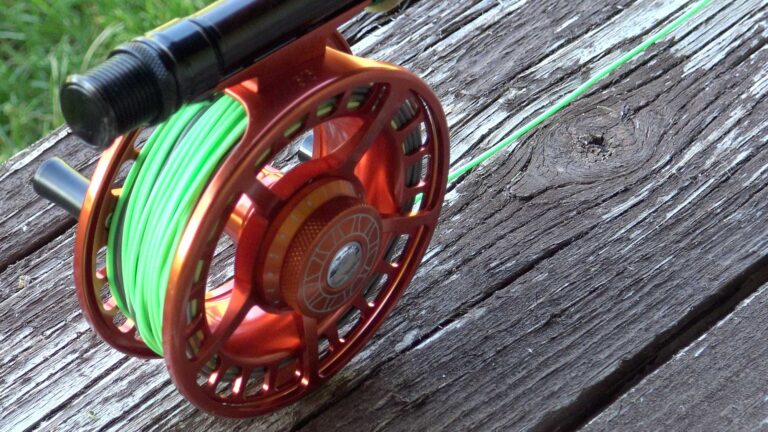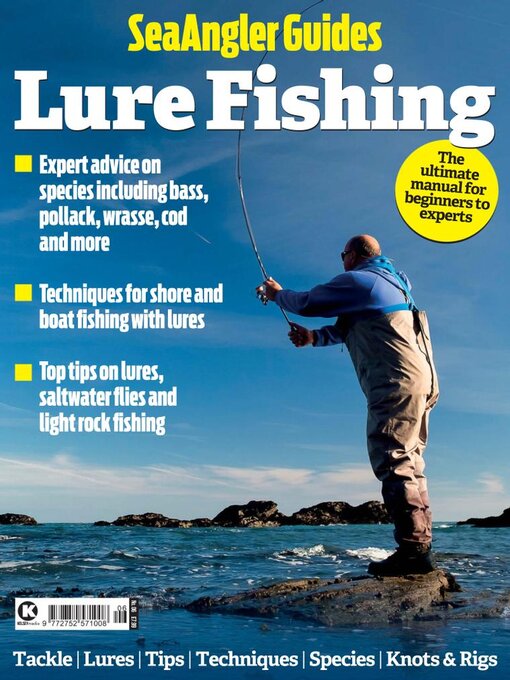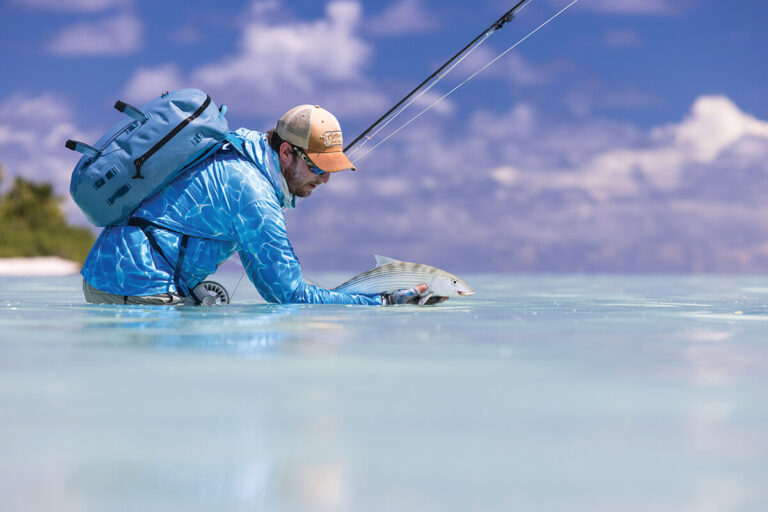Fly fishing and regular fishing have different techniques and purposes, with fly fishing being an angling method that uses a light-weight fly and mimics insects, while regular fishing involves using bait or lures to catch a variety of fish. Fly fishing is often seen as a more challenging, artistic, and precise form of fishing, with a focus on presentation and accuracy.
In contrast, regular fishing is more versatile, allowing for a wider range of fishing methods and targets. Both types of fishing have their own unique appeal and can provide an enjoyable and rewarding experience for anglers of all skill levels.

Credit: www.amazon.com
The Difference Between Fly Fishing And Regular Fishing
Fly fishing and regular fishing may appear similar at first glance, but these two activities have distinct differences that cater to different preferences and fishing techniques. In this blog post, we will delve into the disparities between fly fishing and regular fishing, exploring their basic concepts, techniques, and equipment.
So, whether you’re a seasoned angler or a beginner looking to pick up a new hobby, read on to discover the uniqueness of fly fishing and regular fishing.
Understanding The Basics Of Fly Fishing
Fly fishing is a technique that involves using an artificial fly as bait to entice fish. This method requires a different approach compared to regular fishing. Here are the key points to understand about fly fishing:
- The casting technique: Fly fishing relies on delicately casting the line and fly onto the water’s surface using a specialized fly rod. Anglers must develop precise casting skills to ensure an accurate presentation of the fly.
- The fly: Instead of using live bait or lures like in regular fishing, fly fishing employs artificial flies made from feathers, fur, and other materials. The appearance and movement of the fly mimic insects or small aquatic creatures, appealing to the fish’s feeding instincts.
- The art of presentation: Fly fishing focuses on presenting the fly in a natural and enticing manner to fool the fish into biting. Anglers often utilize various casting techniques, such as the dry fly, nymph, or streamer, depending on the fishing conditions and target species.
Traditional Fishing Techniques And Approaches
Regular fishing, also known as conventional fishing or spin fishing, encompasses a wide range of methods and techniques. Here are the key points to understand about regular fishing:
- The bait or lure: Regular fishing employs live bait, artificial lures, or even cut bait to attract fish. Anglers use various types of lures, such as spoons, jigs, or crankbaits, each designed to imitate the movements of a fish’s natural prey.
- The casting technique: Unlike fly fishing, regular fishing involves casting the bait or lure using a spinning rod or baitcasting rod. Anglers can achieve longer casts and cover larger areas, allowing them to target fish in different parts of the water.
- The waiting game: Regular fishing often requires a patient approach, where anglers cast their line and patiently wait for a fish to bite. While techniques such as trolling or jigging involve more active retrieval, traditional fishing generally involves stationary waiting in a specific spot.
Comparing The Equipment Used In Fly Fishing And Regular Fishing
The equipment used in fly fishing and regular fishing varies significantly, each catering to the specific demands of the technique. Here are the key points to compare the equipment used in these fishing styles:
- Fly fishing equipment:
- Fly rod and reel: Fly fishing employs a specific type of rod and reel designed to cast the lightweight, aerodynamic fly line accurately. The flexible fly rod allows for delicate presentations and absorbs the fish’s sudden movements during the fight.
- Fly line and leader: Fly fishing lines are thicker and heavier than regular fishing lines as they have to carry the weight of the fly during casting. Additionally, the tapered leader is used to connect the fly line to the fly, providing a seamless transition for a more natural drift.
- Fly assortment and accessories: Fly fishers carry a wide range of artificial flies in different sizes, colors, and patterns to imitate various insects and baitfish. They also use additional accessories like hemostats, fly boxes, and tippet spools for efficient fly organization and management.
- Regular fishing equipment:
- Fishing rod and reel: Regular fishing utilizes spinning rods and reels or baitcasting rods and reels. These setups can handle heavier lines and lures, enabling longer casts and increased control over the retrieve.
- Fishing line and tackle: Regular fishing lines are typically stronger and thicker than fly fishing lines. Anglers utilize monofilament, braided, or fluorocarbon lines depending on the fishing conditions and target species. Additionally, they use various types of lures, hooks, sinkers, and swivels to enhance their chances of enticing fish.
Now that you understand the basics of fly fishing and regular fishing, as well as their distinctive techniques and equipment, you can decide which approach aligns with your fishing preference. Whether you prefer the artful presentation of artificial flies or the versatility of different lures, both styles offer their own unique experiences on the water.
So, grab your fishing gear and explore these fascinating fishing methods to embark on thrilling angling adventures.
The Advantages And Disadvantages Of Fly Fishing
Fly fishing and regular fishing are two popular methods of angling that offer unique experiences and challenges. In this section, we will explore the advantages and disadvantages of fly fishing. From increased precision and control in casting to the ability to target specific fish species, fly fishing has its own set of benefits.
However, it also comes with limitations such as a challenging learning curve and limited applications in certain fishing environments. Additionally, there is a higher initial investment in equipment compared to regular fishing.
Exploring The Benefits Of Fly Fishing
Increased precision and control in casting:
- Fly fishing involves using a lightweight fly line and a specialized fly rod to cast a lightweight artificial fly. This allows for more delicate and accurate presentations.
- Anglers can achieve precise casting techniques, such as roll casting and mending, which are essential for fishing in challenging conditions like rivers with strong currents or areas with limited casting space.
Better angler-fish connection:
- With fly fishing, the angler is in direct contact with the fish during the fight. The lack of a heavy sinker or lure allows for a more natural connection, increasing the angler’s ability to feel the fish’s movements.
- This enhanced connection between the angler and the fish adds to the thrill and excitement of the sport, making for a more immersive experience.
Ability to target specific fish species:
- Fly fishing offers versatility when it comes to targeting specific fish species. Different fly patterns can imitate various aquatic insects, baitfish, or even small mammals, allowing anglers to match the natural food source of their targeted species.
- This precision targeting can be particularly effective when pursuing trout, salmon, bass, and other species that are known for their selective feeding habits.
Assessing The Limitations Of Fly Fishing
Challenging learning curve:
- Fly fishing requires a certain level of skill and technique. From learning to cast properly to understanding the intricacies of fly selection and presentation, there is a significant learning curve involved.
- Beginners may find it challenging to master the art of fly fishing compared to conventional fishing methods. However, with practice and patience, anglers can develop the necessary skills to enjoy the sport to its fullest.
Limited applications in certain fishing environments:
- While fly fishing excels in certain situations, it may not be the most effective technique in every fishing environment. For example, fly fishing in deep offshore waters or heavily weeded areas can be challenging and less productive compared to other fishing methods.
- Additionally, fly fishing requires ample open space for casting, making it less suitable for fishing in tight quarters or areas with overhead obstacles such as dense vegetation or low-hanging branches.
Higher initial investment in equipment:
- When it comes to fly fishing, there is a higher initial investment in equipment compared to regular fishing. Anglers need a fly rod, reel, fly line, leaders, and a selection of flies, all of which can add up in cost.
- However, with proper care and maintenance, quality fly fishing gear can last for years, making it a worthwhile investment for those who are passionate about the sport.
Fly fishing offers advantages such as increased precision in casting, a better angler-fish connection, and the ability to target specific fish species. However, there are limitations such as a challenging learning curve, limited applications in certain fishing environments, and a higher initial investment in equipment.
Ultimately, the choice between fly fishing and regular fishing depends on personal preferences, fishing goals, and the specific fishing conditions one encounters.
Techniques And Strategies For Successful Fly Fishing And Regular Fishing
Fly Fishing Techniques And Best Practices
Fly fishing is a unique and exhilarating form of fishing that requires a distinct set of techniques and best practices. Whether you’re a beginner or an experienced angler, mastering these strategies will greatly enhance your success on the water. Here are some key points to keep in mind when it comes to fly fishing:
- Choosing the right flies for different situations: Fly selection is crucial in fly fishing. Different fly patterns imitate various insects or baitfish, so it’s essential to match your fly to the prevailing conditions and the type of fish you’re targeting. Research the local hatch patterns and carry a variety of flies in your tackle box to increase your chances of success.
- Mastering various casting techniques: In fly fishing, casting is an art form. Practice and perfecting different casting techniques such as the overhead cast, roll cast, and double haul will give you better control over where your fly lands and how it behaves on the water. Remember to remain patient and execute smooth, controlled motions to achieve accurate and delicate presentations.
- Understanding the importance of presentation and drift: Presentation plays a vital role in fly fishing. It’s crucial to present your fly naturally and convincingly to the fish. Achieving a drag-free drift, where the fly floats naturally along with the current, will entice more bites. Pay attention to your line control, mend your line if necessary, and stay attuned to the speed and direction of the current.
Traditional Fishing Strategies And Approaches
While fly fishing offers its own unique charm, traditional fishing techniques are equally effective in capturing different species of fish. Here are some tried and tested strategies to enhance your regular fishing experiences:
- Selecting the appropriate bait and lures: Choosing the right bait or lure for the fish you’re targeting is vital in traditional fishing. Research the species’ feeding habits and preferences, then select bait or lures that mimic their natural prey. Experiment with various options like live bait, artificial lures, or even scent-enhanced baits to find the most effective option.
- Learning the art of casting with spinning or baitcasting reels: Traditional fishing commonly utilizes spinning or baitcasting reels. Mastering the casting techniques for these reels is crucial. Practice your accuracy and distance casting, and learn how to adjust the reel’s braking system or drag to avoid line tangles and break-offs.
- Adapting to different fishing environments and conditions: Regular fishing takes place in diverse environments, ranging from lakes and rivers to open seas and coastal areas. Understanding the unique challenges and opportunities presented by each environment will significantly increase your chances of success. Adjust your fishing techniques, rigs, and bait choices accordingly to adapt to different conditions such as depth, water clarity, and structure.
By incorporating these techniques and strategies into your fly fishing and regular fishing repertoire, you’ll be well-equipped to achieve successful fishing outings. Remember, practice and experience will refine your skills, so get out there and enjoy the art and thrill of fishing!
Conclusion
After delving into the world of fly fishing and regular fishing, it is clear that both methods have their merits and appeal to different types of anglers. Fly fishing offers a thrilling and artistic approach, allowing for precise casting and an opportunity to bond with nature.
On the other hand, regular fishing provides a more straightforward and accessible angling experience, catering to those looking for a relaxing way to enjoy the outdoors. Ultimately, whether you choose fly fishing or regular fishing depends on your personal preferences, skill level, and location.
Remember, the most important thing is to have fun and appreciate the beauty of the sport. So grab your gear, head to your favorite fishing spot, and immerse yourself in the art of angling. Happy fishing!






